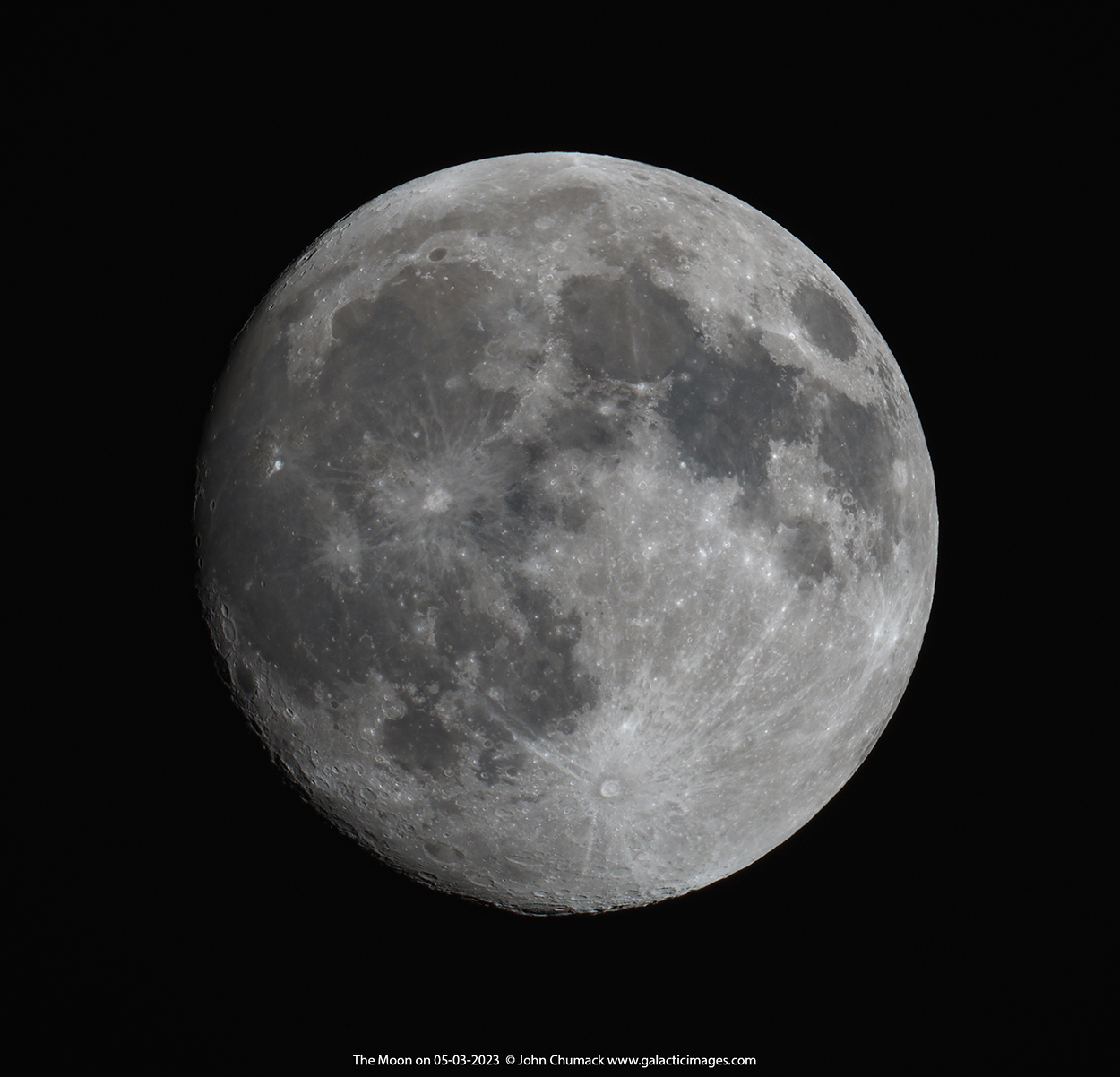Here is a shot of the Waxing Gibbous Moon from last night….95% lit, as it heads for Full Moon on Friday.
Waxing Gibbous Lunar Phase:
This phase occurs between the first quarter and full Moon and describes the Moon when it is more than half lit, but not yet fully. At the beginning of this stage in the Northern Hemisphere, we see the right half of the Moon illuminated plus a tiny fraction more extending into the left side. As the days pass, the light creeps farther left, covering more and more of the Moon’s surface until the full Moon phase, when the entire disk is illuminated. In the Southern Hemisphere, the same happens, only from left to right.
“Gibbous” comes from a Latin word meaning “humpbacked,” referring to the curved lit area on the Moon’s surface.
The average composition of the lunar surface by weight is roughly 43% oxygen, 20% silicon, 19% magnesium, 10% iron, 3% calcium, 3% aluminum, 0.42% chromium, 0.18% titanium and 0.12% manganese. Orbiting spacecraft have found traces of water on the lunar surface that may have originated from deep underground or just below the surface inside shadowed craters.
Some rare elements have also been detected, the Moon may also have ores of rare elements such as beryllium, lithium, zirconium, niobium, tantalum, and so forth.
I captured this shot from my backyard observatory in Dayton, Ohio on 05-03-2023, using my 6 inch diameter F5 Newtonian reflector telescope, on a Bisque MyT Robotic Tracking Mount, and a ZWO 294MC Cooled Color Cmos Camera, for a single 3ms exposure.
On Friday the Moon will be Full once again.
You can look for the Full “Flower Moon” on Friday evening May 5th 2023,
The Flower Moon is named after the abundant flowers that grow in the Earth’s Northern Hemisphere in May.
Best Regards,
John Chumack
www.galacticimages.com







